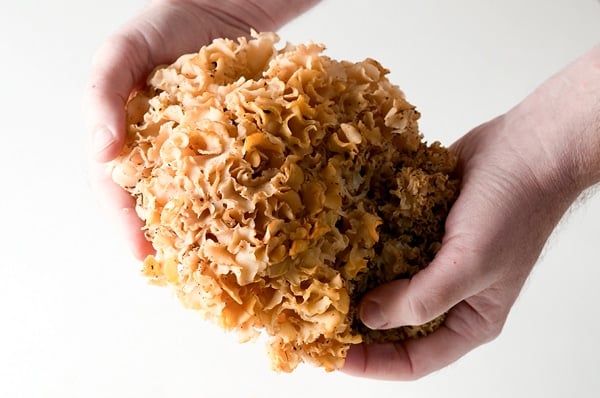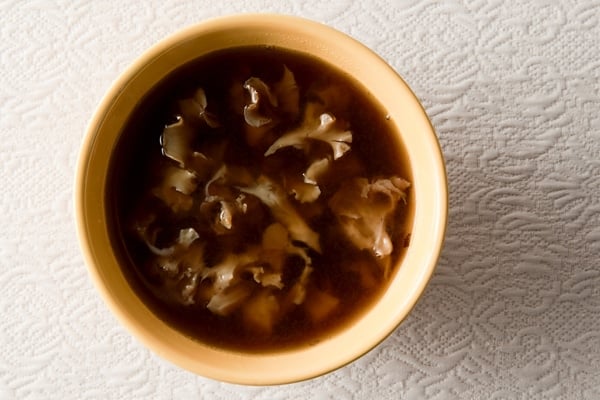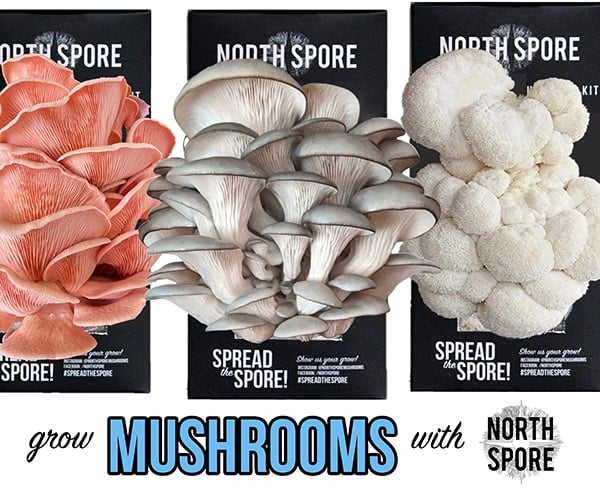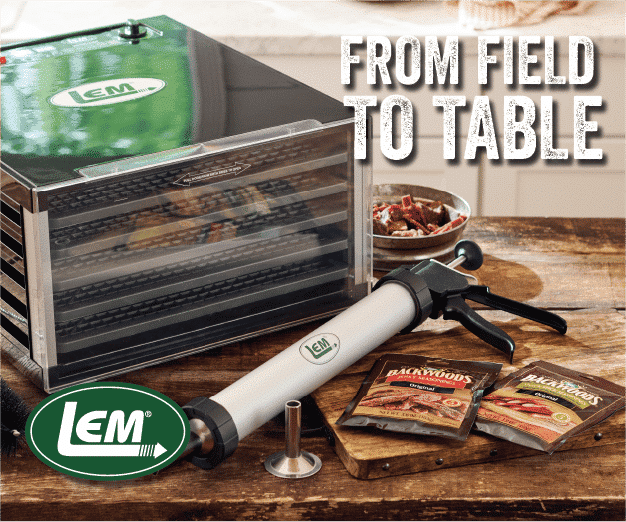Sparassis, the Elusive Cauliflower Mushroom
February 27, 2014 | Updated January 15, 2024
As an Amazon Associate I earn from qualifying purchases.

Sparassis. Cauliflower mushroom. Queen of the forest. A one-mushroom party. Big, easy to identify, delicious. What’s not to love?
If this sounds too good to be true, it is. The cauliflower mushroom, as S. crispa is commonly called out here, is devilishly hard to find. I’ve walked whole seasons here in California without finding one. But walk you must, because this mushroom is a loner.
The silver lining is that cauliflower mushrooms come up in the same spot year after year, so mark your GPS or mental map. Also mark your calendar because you won’t want to miss your chance.
The sparassis I am holding in the picture above is half of one my friend Eric and I found on California’s North Coast. I’ve returned to this spot several times this season, but our drought had been so severe I thought I might never see it again. Thankfully we’re now getting some serious rain, so I can only hope to see it sprout soon.
Typically cauliflower mushrooms pop between December and early March here in California. It’s a bit earlier in the Pacific Northwest; my friend Langdon Cook tends to find them in October and November up in Washington. There is an Eastern variety of sparassis, too: S. spathulata, that you can find as early as July and as late as October. You can find a variety of sparassis in Europe, too.
That’s the when. The “where” is at the base of a tree. Sparassis is a saprobe, a parasite that leeches off particular kinds of trees. In the West it will be pines — mine’s under a Bishop pine — and in the East look at the base of hardwoods. The mushroom seems to prefer older trees that are a little beat down; my sparassis is under a pine with a trunk about two feet wide with a bunch of storm-broken limbs.
What you’re looking for is a large, ivory-to-yellow clump. How large? A gigantic one can weigh a full 100 pounds, but most are between a pound and 10 pounds. They burst up from under the pine duff and really shine in a dark wood.
Identification is super easy. Langdon has the best analogy: Imagine a big batch of egg noodles that you left in a colander overnight. That is exactly what a sparassis looks like. There are no poisonous look-similars.
Cut the mushroom at the ground level and shake it upside down to dislodge random pine needles, woodland creatures and whatnot. Take it home and refrigerate it for up to a week, covered in a paper towel or cloth in a plastic container. The edges will yellow as the cauliflower mushroom ages, but it will still be OK.

Once you are ready to cook your sparassis, you will need to grab your favorite adult beverage and get to cleaning. All those folds trap ungodly amounts of debris — and gird your loins for millipedes and earwigs leaping out at you. How do I do it? I cut the mushroom into chunks and dunk them into a big bowl of cold water. Cauliflower mushrooms don’t absorb a lot of moisture easily, so fear not. Slice off any gnarly looking bits and lay the good pieces on a cloth to dry.
How to cook them? Cauliflower mushroom is the ultimate soup mushroom. It’s essentially a cross between an al dente egg noodle and a mushroom. It has a mild flavor a lot like a morel mushroom that happens to go very well with red meats.

Lang likes it with beef pot roast, but he also pickles them. A lot of people will sauté them like any other mushroom, but I think they need some time to cook properly. (If you get more than you can eat in a few days, my advice is to cook them first, then freeze.)
Looking for more info about finding and cooking wild mushrooms? I have a huge selection of mushroom recipes here.






I live in Mississippi and today while mowing I discovered two of these jewels. They are about the size of a softball. Do I let them continue to grow or harvest them now? What do I do after I harvest them to preserve them when I am prepared to use them! Yes I’m a mushroom rookie!
Cal: I’d let them grow a little. They can get to be twice that size. Refrigerate and they’ll keep a week or so. After that, I am not sure — I’ve never not eaten them fresh.
I just found a shroom, that looked just like a head of cauliflower. I posted it on FB and asked if anyone knew what it was called! Little did I know, Cauliflower mushroom, was its name,.
It is only the size of a softball. I will keep an eye on it and give it a try!
Thanks for this. We’d never seem them before and suddenly here are too of them growing out is ver wet mulched garden beds. Really just thick wet hay
Find them every year in So WA. They are very rich in flavor. I cut a smallish one early this fall, about a pound and a half. Went back to the same spot to pick chantrelles yesterday, the cauliflower had regrown and this time yielded 4.435 pounds. Yes they do regrow if you cut and do not pluck. We cut ALL mushroom varieties and use mesh bags or grided containers so any spores can hopefully reach the ground while walking. Please, please,please do not pluck, rip, or tear any mushroom out of the ground.
We find many different mushrooms here to include morels in my yard. I also dry mushrooms and have a dried medley mix (six different kinds) that I use for soups,stews,poultry stuffing,sauces, or any dish that requires a longer cooking time. Happy foraging!
In late August and early Sept I found about 3 dozen Sparassis spathulata in Ct. I saute them the fronds in olive and butter, then add a little chicken stock and let it evaporate and cook until a little crispy like bacon.
All of your positive feedbacks about cauliflower mushrooms and the great recipe I am glad I didn’t pass up the 20+pounder I found today. In the Olympic Peninsula, WA. elk season opener. I was looking at all the corral and chanterelle mushrooms on the side of the road. I had my hunting partner stop. jumped out of the truck as if I seen an elk, grabbed a knife and ran down the hill. He was puzzled what the heck I was doing I lifted up this huge specimen, then looked up to the truck…Oh crap. Good thing I left 1/4 of it there for future bounty.
Just found a 4-pounder while on a hunt in the Coast Range (Oregon). Excited to try it for the first time! Only done chanterelles in the past, so will probably try a broth/cream type soup for starters.
Just returned from a foray into second-growth hemlock & fir in Western Oregon. Our party of 5 was looking for chanterelles–and scored nicely–when one of the group pointed to something and asked, “what’s this?”. It was a canteloupe-sized cauliflower mushroom. I’ve seen only four (including this one) in all my years of ‘shroom hunting. For 3 of our party it was the first time they’d encountered one–or even heard of them. A very successful outing. Our vegan daughter happily took it home to experiment with.
I just found my first this weekend! It was a beauty, fresh & had No bugs, etc. Fresh! I soaked it in salt water & only had needles to clean out! Soup for us! Wonderful!
Tip for getting rid of critters: submerge the sparassis for a good soak in a bucket of very salty water. As others have noted, all kinds of life will crawl out!
Im in France and so annoyed as 5 weeks ago I found 3 huge ones at the base of a pine tree. I took them to the phaacy to check and they said because they were slightly brown ( they said should be white) if i ate them i cud be sick so i binned them! Then found out that one can dry them… so kuch gor being old..the French only know their ceps.trumpets hedgehogs. The pharmacy knows crap all they look in a book . Anyhow I went back and was able to find a smaller one.
Found a small one in southern RI at the beginning of October growing at the base of a pitch pine. Sauteed half and sprinkled the rest under some pines at our house. Nothing ventured, nothing gained..
I now know what it was that I found a couple of months ago on my farm in Kentucky. This was as big as a basketball. I left it but will.look in the same spot next year. If I’d only known….
Isn’t this mushroom real close to hen of the woods? I just found one and could not tell the difference unless geography has anything to do with it…I’m here in Wisconsin.
Nick: They’re very different in appearance. HOW is gray to black, and sparassis is pale to creamy.
Thanks for the recipe and information. Found a 4 – 5 lbr in SW Washington state this weekend.
literally found 4 this morning in Tillamook forestoregon
Just harvested my first cauliflower here in Scotland, growing at the base of a Scots pine (Pinus sylvestris). I ate a piece of one in France years ago so I know they’re good! This one had a whole community of slaters (wood lice) living it in, plus an earwig, a spider, a millipede and various other wee beasties, so I had to re-locate them. I doubt they will find such a cosy home. I read that it if you don’t need the whole fungus, you can cut off a portion and the rest of it lives on. I’m going to saute mine in butter and maybe eat with rice and egg, but will try the broth recipe next time.
Just started getting into mushroom id last year (2014) and found my first cauliflower yesterday in a woods in Framingham, MA. Gorgeous little creature; I left her where she was. BTW: mushrooming and birding is a perfect combination. You can hear the birds and the mushrooms stay right where they are.
Slightly embarassed to admit I found one here in central NH by just stumbling across a large, weird looking “thing” growing at the base of a pine. I didn’t even know what it was until I got home and looked it up in my guidebook. Went back the next day and harvested ~2 lbs. Definitely needs thorough cleaning but it was worth it! So far we tried it simply pan fried in a little olive oil and garlic, and also mixed into risotto.
Had a bit of rain this week and found 4 more of these within 50 feet of where I found my first in July.